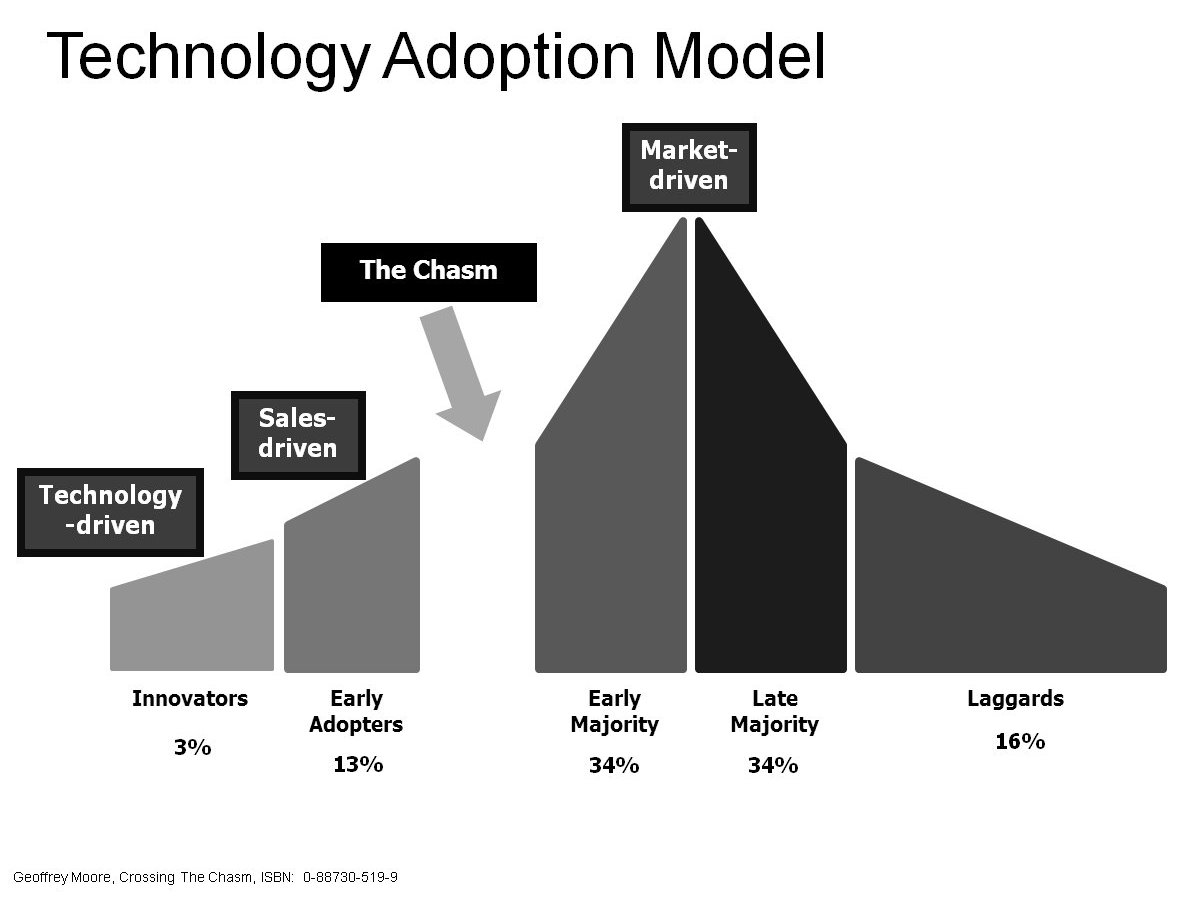The Connection between Market-Driven Product Management and Marketplace Success
Introduction
Product management is a core business function that is of profound significance for technology companies. This is due to the fact that technology companies and their products' probability of success are deeply affected by the maturity level and type of product management that is being practiced in the organization. This proclamation document strives to explain the relationship between market-driven product management and a product's chances of marketplace success.
Roots in Tradition
There has been a historical tendency for technical and manufacturing oriented people to create and manage technology businesses. These technology companies often remain and operate as a reflection of their founder's business perspective where providing the best technology is assumed to be an automatic guarantee of success. Consequently, pure technology-driven or sales-driven companies, particularly when they are financially successful, are reluctant to consider market-driven product management practices. These companies may ponder the effect and importance of market-driven product management on their products' chances for marketplace success yet are hesitant to introduce true market-driven product management practices even when it is most needed and justified by the market conditions.
Evolution of Technology Companies
Many technology companies begin as being technology-driven with an exclusive focus on creating better technology. The dominant function in the technology-driven company is its engineers. After the technology and related products were developed the technology-driven company seeks customers to (1)generate revenue and (2)help better adapt the product's feature set to the customers' needs. This move usually signals a transition to being sales-driven (a.k.a., "custom-job-driven"), a product delivery strategy that is focused on customizing the technology or product to the specific needs of an individual customer and generating as much short-term return on investment (ROI) possible from that individual customer. The transition to being sales-driven often implies a shift in the company's internal centers of power with considerable influence moving from the engineers to the sales people. From this point on, technology companies usually solidify their character with a technology-driven or sale-driven mindset because it is familiar and undisruptive.
Crossing the Revenue Chasm
The Chasm Model, first published in 1991 in the "Crossing the Chasm" book by Geoffrey A. Moore, includes a graphic representation of a product's life and sales cycle as well as customer segmentation of the product's target market. The Chasm Model, a.k.a. The Technology Adoption Model, deliberates different marketing strategies and tactics that could be applied at the different phases in the product's life and sales cycle. The key point is that as markets evolve the different customer segments have very different expectations of product functionality and how it is marketed to them.
Moore argues that there is a chasm, an evolutionary obstacle that needs to be transcended so that the company can move from selling to the limited early markets of a product (innovators and early adopters – 16% of the overall market) and begin to capitalize on the product's true financial potential by selling to the larger mainstream markets (early and late majorities – 68% of the overall market). Many companies fail to make that necessary change, cross the chasm, and achieve the exponential marketplace success. For many companies, not crossing the chasm is the slow beginning of sunk costs and forgone revenues.
As markets develop the business philosophies also must change. The failure to cross the chasm mainly occurs because companies fail to timely modify their product planning and product marketing practices. The early markets are served by the technology company via a mixture of (firstly) technology-driven and (secondly) sales-driven product delivery strategies. However, after exhausting the limited financial potential of the early markets the technology company, for reasons mostly rooted in internal power politics and the prevailing technology-focused business culture, will not adopt a market-driven product delivery strategy which is the only way to reap the financial potential of the mainstream markets.
The reluctance to change is predominantly because such a move will cause a shift in the company's internal centers of power with considerable influence moving from the engineers and/or the sales people to the product managers. The focus of the company will also shift from resources being allocated towards technology development and product customization to heavily engaging in processes to fully understand the customers' needs in order to better define and market the product.
Conclusion
Technology companies are founded with a relatively good understanding of the market need but they do not maintain the market sensing process via instituting and reinforcing product management practices. The culture of the technology-driven organization is intrinsically concentrated on technology and consequently decisions are perpetually made from a technical, production, or sales perspective.
After two to three years of engaging in technology-driven and sale-driven product delivery strategies, the company's sales will usually either stabilize or slowly stagnate, unless it adopts and confidently applies a market-driven product delivery strategy. Reversal of fortunes is always feasible by embracing a heightened receptivity to market needs that is combined with efficient product planning and product marketing processes.
The question that technology companies ask themselves is "Why is it critical to introduce market-driven product management practices?" and the answer is that technology companies ultimately must follow market-led principles in order to financially succeed in the long term. The only corporate function and methodology that can implement market-led principles to help a technology company cross the revenue chasm is market-driven product management.

